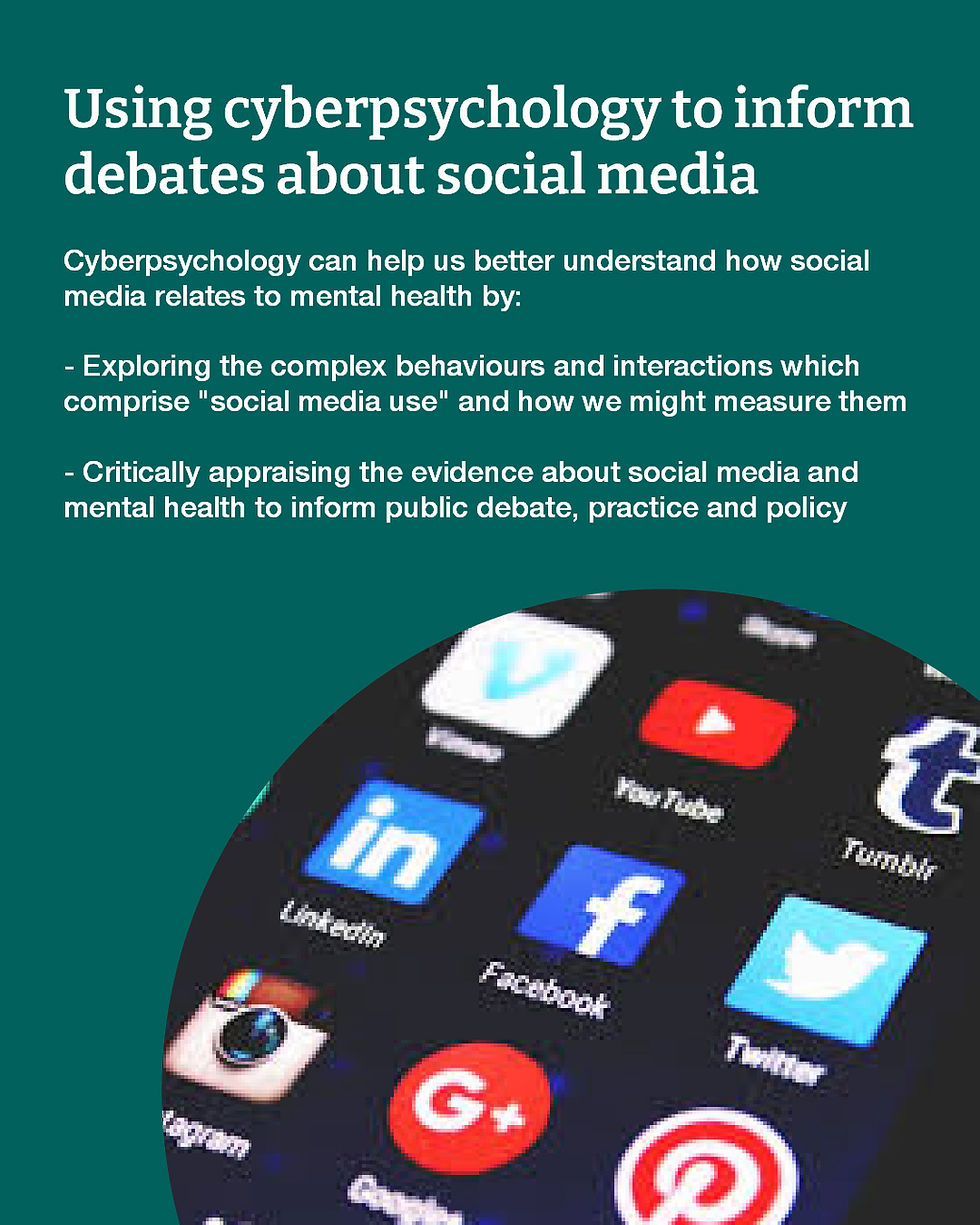Digital Phenotyping- what do your digital traces reveal about you?
- LindaKKaye

- Jan 4, 2024
- 2 min read
Cyberpsychology is the psychological study of technology use and online behaviour. Cyberpsychology researchers are broadly interested in how online worlds affect our everyday experiences and behaviour, and the extent to which we can understand human psychology from studying people’s online behaviour.
In respect of the latter, understanding how specific digital markers and online behaviours reveal certain characteristics about people has been referred to as “Digital Phenotyping” (Torous et al., 2016). Within psychological science, we might typically use the term digital traces which might be more commonly known as “digital footprints”. Digital traces refer to the traces we leave behind from our interactions with technological devices (e.g., smartphones) and online environments (e.g., websites, social media platforms, browsers etc). Digital traces can be “active footprints” which are typically deliberate actions (e.g., posting content on social media sites, registering a Gmail account) as well as “passive footprints” which are often the more subtle traces we leave behind (e.g., data left in cookies from web searching/browsing).
There are a wide range of intriguing research studies which have explored the correlates of different types of digital traces with aspects of human psychology. These broadly have focused on demographic (Kosinski et al., 2013) or personality characteristics (Hinds & Joinson, 2019) to assess the extent to which these digital markers might be suitable predictors of both interpersonal and intrapersonal differences (Hinds & Joinson, 2019; Shaw et al., 2022).
Much of the evidence within this sphere suggests that it is often the more passively-derived digital traces which relate to certain demographic or psychographic characteristics. Therefore there are a multitude of subtle types of interactions we have with devices or online environments which might be forging our digital phenotypes.
These insights might be especially insightful in the context of digital marketing in which data-driven psychographic market segmentation might be highly sought-after. This broadly fits within the domain and interests of consumer cyberpsychology.
You can find out more about consumer cyberpsychology and relevant training opportunities here.
Key resources
Hinds, J , Brown, O., Smith, L. G. E., Piwek, L., Ellis, D. A., & Joinson, A. N. (2022). Integrating Insights About Human Movement Patterns From Digital Data Into Psychological Science. Current Directions in Psychological Science, 31(1), 88–95. https://doi.org/10.1177/09637214211042324
Hinds, J., & Joinson, A. (2019). Human and computer personality prediction from digital footprints. Current Directions in Psychological Science, 28(2), 204-2011. https://doi.org/10.1177/0963721419827849
Kosinski, M., Stillwell, D., & Graepel, T. (2013). Private traits and attributes are predictable from digital records of human behavior. PNAS, 110 (5), 110 (15), 5802-5805. https://doi.org/10.1073/pnas.1218772110
Shaw, H., Taylor, P., Ellis, D., & Conchie, S. (2022). Behavioral consistency in the digital age. Psychological Science, 33(3), 364-370. https://doi.org/10.1177/09567976211040491
The Psychologist (2020). When the job hunts you. Retrieved 4 January 2024. https://www.bps.org.uk/psychologist/when-job-hunts-you
Torous, J., Kiang, M.V., Lorme, J., & Onnela J. (2016). New Tools for New Research in Psychiatry: A Scalable and Customizable Platform to Empower Data Driven Smartphone Research. JMIR Ment Health, 3(2),e16. https://doi.org/10.2196/mental.5165



Digital Marketing Assignment Help is a game-changer for students navigating the ever-evolving world of online marketing. Their expert guidance ensures a deep understanding of digital strategies and effective execution in assignments. I've benefited greatly from their support, witnessing significant improvement in my grades and practical knowledge. For anyone seeking reliable assistance in digital marketing assignments, Digital Marketing Assignment Help is the go-to solution. Trust me, you won't be disappointed